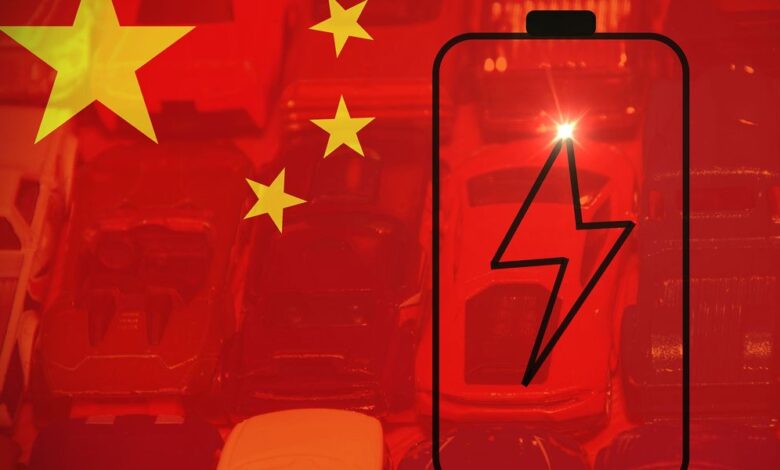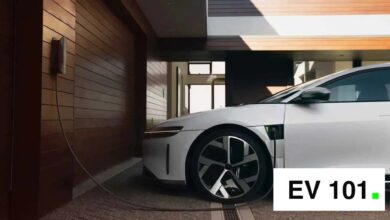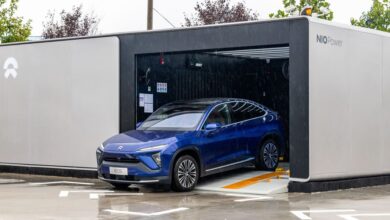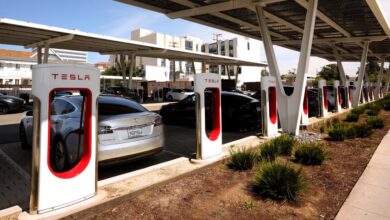For EVs, Semi-Solid-State Batteries Offer a Step Forward

Earlier this month, China announced that it is pouring 6 billion yuan (about US $827 million) into a fund meant to spur the development of solid-state batteries by the nation’s leading battery manufacturers. Solid-state batterie use electrolytes of either glass, ceramic, or solid polymer material instead of the liquid lithium salts that are in the vast majority of today’s electric vehicle (EV) batteries. They’re greatly anticipated because they will have three or four times as much energy density as batteries with liquid electrolytes, offer more charge-discharge cycles over their lifetimes, and be far less susceptible to the thermal runaway reaction that occasionally causes lithium batteries to catch fire.
But China’s investment in the future of batteries won’t likely speed up the timetable for mass production and use in production vehicles. As IEEE Spectrumpointed out in January, it’s not realistic to look for solid-state batteries in production vehicles anytime soon. Experts Spectrum consulted at the time “noted a pointed skepticism toward the technical merits of these announcements. None could isolate anything on the horizon indicating that solid-state technology can escape the engineering and ‘production hell’ that lies ahead.”
“To state at this point that any one battery and any one country’s investments in battery R&D will dominate in the future is simply incorrect.” –Steve W. Martin, Iowa State University
Reaching scale production of solid-state batteries for EVs will first require validating existing solid-state battery technologies—now being used for other, less demanding applications—in terms of performance, lifespan, and relative cost for vehicle propulsion. Researchers must still determine how those batteries take and hold a charge and deliver power as they age. They’ll also need to provide proof that a glass or ceramic battery can stand up to the jarring that comes with driving on bumpy roads and certify that they can withstand the occasional fender bender.
Here Come Semi-Solid-State Batteries
Meanwhile, as the world waits for solid electrolytes to shove liquids aside, Chinese electric vehicle manufacturer Nio and battery maker WeLion New Energy Technology Co. have partnered to stake a claim on the market for a third option that splits the difference: semi-solid-state batteries, with gel electrolytes.
Car News China reported in April that the WeLion cells have an energy density of 360 watt-hours per kilogram. Fully packaged, the battery’s density rating is 260 Wh/kg. That’s still a significant improvement over lithium iron phosphate batteries, whose density tops out at 160 Wh/kg. In tests conducted last month with Nio’s EVs in Shanghai, Chengdu, and several other cities, the WeLion battery packs delivered more than 1,000 kilometers of driving range on a single charge. Nio says it plans to roll out the new battery type across its vehicle lineup beginning this month.
But the Beijing government’s largesse and the Nio-WeLion partnership’s attempt to be first to get semi-solid-state batteries into production vehicles shouldn’t be a temptation to call the EV propulsion game prematurely in China’s favor.
So says Steve W. Martin, a professor of materials science and engineering at Iowa State University in Ames. Martin, whose research areas include glassy solid electrolytes for solid-state lithium batteries and high-capacity reversible anodes for lithium batteries, believes that solid-state batteries are the future and that hybrid semi-solid batteries will likely be a transition between liquid and solid-state batteries. However, he says, “to state at this point that any one battery and any one country’s investments in battery R&D will dominate in the future is simply incorrect.” Martin explains that “there are too many different kinds of solid-state batteries being developed right now and no one of these has a clear technological lead.”
The Advantages of Semi-Solid-State Batteries
The main innovation that gives semi-solid-state batteries an advantage over conventional batteries is the semi-solid electrolyte from which they get their name. The gel electrolyte contains ionic conductors such as lithium salts just as liquid electrolytes do, but the way they are suspended in the gel matrix supports much more efficient ion conductivity. Enhanced transport of ions from one side of the battery to the other boosts the flow of current in the opposite direction that makes a complete circuit. This is important during the charging phase because the process happens more rapidly than it can in a battery with a liquid electrolyte. The gel’s structure also resists the formation of dendrites, the needle-like structures that can form on the anode during charging and cause short circuits. Additionally, gels are less volatile than liquid electrolytes and are therefore less prone to catching fire.
Though semi-solid-state batteries won’t reach the energy densities and lifespans that are expected from those with solid electrolytes, they’re at an advantage in the short term because they can be made on conventional lithium-ion battery production lines. Just as important, they have been tested and are available now rather than at some as yet unknown date.
Semi-solid-state batteries can be made on conventional lithium-ion battery production lines.
Several companies besides WeLion are actively developing semi-solid-state batteries. China’s prominent battery manufacturers, including CATL, BYD, and the state-owned automakers FAW Group and SAIC Group are, like WeLion, beneficiaries of Beijing’s plans to advance next-generation battery technology domestically. Separately, the startup Farasis Energy, founded in Ganzhou, China, in 2009, is collaborating with Mercedes-Benz to commercialize advanced batteries.
The Road Forward to Solid-State Batteries
U.S. startup QuantumScape says the solid-state lithium metal batteries it’s developing will offer energy density of around 400 Wh/kg. The company notes that its cells eliminate the charging bottleneck that occurs in conventional lithium-ion cells, where lithium must diffuse into the carbon particles. QuantumScape’s advanced batteries will therefore allow fast charging from 10 to 80 percent in 15 minutes. That’s a ways off, but the Silicon Valley–based company announced in March that it had begun shipping its prototype Alpha-2 semi-solid-state cells to manufacturers for testing.
Toyota is among a group of companies not looking to hedge their bets.The automaker, ignoring naysayers, aims to commercialize solid-state batteries by 2027 that it says will give an EV a range of 1,200 km on a single charge and allow 10-minute fast charging. It attributes its optimism to breakthroughs addressing durability issues. And for companies like Solid Power, it’s also solid-state or bust. Solid Power, which aims to commercialize a lithium battery with a proprietary sulfide-based solid electrolyte, has partnered with major automakers Ford and BMW. ProLogium Technology, which is also forging ahead with preparations for a solid-state battery rollout, claims that it will start delivering batteries this year that combine a ceramic oxide electrolyte with a lithium-free soft cathode (for energy density exceeding 500 Wh/kg). The company, which has teamed up with Mercedes-Benz, demonstrated confidence in its timetable by opening the world’s first giga-level solid-state lithium ceramic battery factory earlier this year in Taoke, Taiwan.
From Your Site Articles
Related Articles Around the Web



